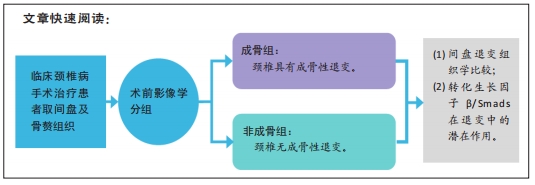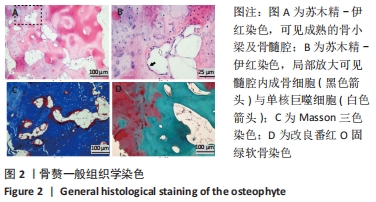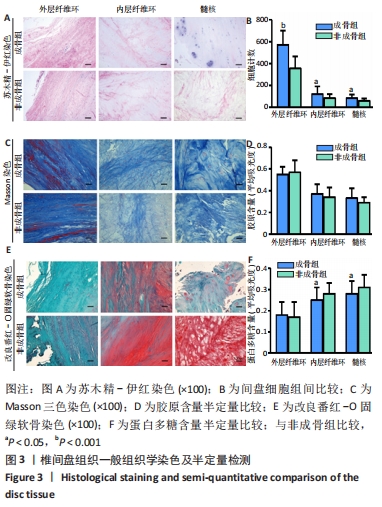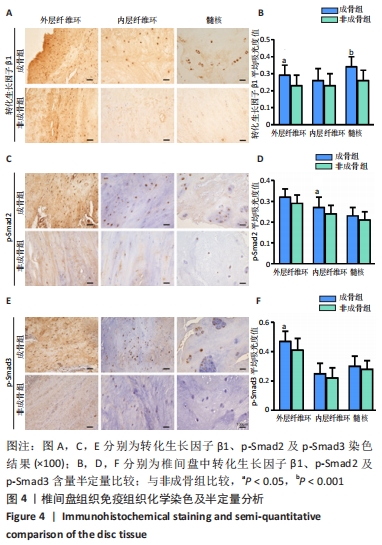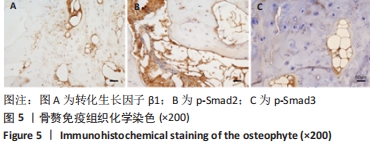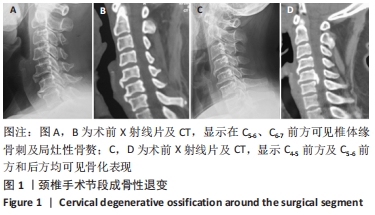[1] FUSELLIER M, CLOUET J, GAUTHIER O, et al. Degenerative lumbar disc disease: in vivo data support the rationale for the selection of appropriate animal models. Eur Cells Mater. 2020;39:18-47.
[2] PĘKALA P, TATERRA D, KRUPA K, et al. Correlation of morphological and radiological characteristics of degenerative disc disease in lumbar spine: a cadaveric study. Folia Morphologica. 2021. doi: 10.5603/FM.a2021.0040.
[3] GANDHI AA, GROSLAND NM, KALLEMEYN NA, et al. Biomechanical analysis of the cervical spine following disc degeneration, disc fusion, and disc replacement: a finite element study. Int J Spine Surg. 2019;13(6):491-500.
[4] 解志锋, 刘清, 刘冰, 等.腰椎间盘疲劳损伤的生物力学特性[J].中国组织工程研究,2021,25(3):339-343.
[5] LEE SH, SON DW, LEE JS, et al. Relationship between endplate defects, modic change, facet joint degeneration, and disc degeneration of cervical spine. Neurospine. 2020;17(2):443-452.
[6] CAI XY, SANG D, YUCHI CX, et al. Using finite element analysis to determine effects of the motion loading method on facet joint forces after cervical disc degeneration. Comput Biol Med. 2020;116:103519.
[7] KIM KS, ROGERS LF, REGENBOGEN V. Pitfalls in plain film diagnosis of cervical spine injuries: false positive interpretation. Surgical neurology, 1986;25(4):381-392.
[8] EERD MV, PATIJN J, LOEFFEN D, et al. The Diagnostic Value of an X‐ray based scoring system for degeneration of the cervical spine: A Reproducibility and Validation study. Pain Pract. 2021;21(7):766-777.
[9] BOODY BS, LENDNER M, VACCARO AR. Ossification of the posterior longitudinal ligament in the cervical spine: a review. Int Orthop. 2019; 43(4):797-805.
[10] LI G, WANG Q, LIU H, et al. Postoperative Heterotopic Ossification After Cervical Disc Replacement Is Likely a Reflection of the Degeneration Process. World Neurosurg. 2019;125:e1063-e1068.
[11] LEE SE, CHUNG CK, JAHNG TA. Early development and progression of heterotopic ossification in cervical total disc replacement. J Neurosurg Spine. 2012;16(1):31-36.
[12] HUI N, PHAN K, CHENG H, et al. Complications of cervical total disc replacement and their associations with heterotopic ossification: a systematic review and meta-analysis. Eur Spine J. 2020;29(11):2688-2700.
[13] JIN H, SHEN J, WANG B, et al. TGF-β signaling plays an essential role in the growth and maintenance of intervertebral disc tissue. FEBS Lett. 2011;585(8):1209-1215.
[14] TOLONEN J, GRÖNBLAD M, VIRRI J, et al. Transforming growth factor beta receptor induction in herniated intervertebral disc tissue: an immunohistochemical study. Eur Spine J. 2001;10(2):172-176.
[15] SAMPARA P, BANALA RR, VEMURI SK, et al. Understanding the molecular biology of intervertebral disc degeneration and potential gene therapy strategies for regeneration: a review. Gene Ther. 2018;25(2):67-82.
[16] Shapiro IM, Risbud MV. Intervertebral Disc. Springer Verlag Gmbh. 2016.
[17] GULLBRAND SE, MALHOTRA NR, SCHAER TP, et al. A large animal model that recapitulates the spectrum of human intervertebral disc degeneration. Osteoarthritis Cartilage. 2017;25(1):146-156.
[18] RUTGES JP, DUIT RA, KUMMER JA, et al. A validated new histological classification for intervertebral disc degeneration. Osteoarthritis Cartilage. 2013;21(12):2039-2047.
[19] LAWSON LY, HARFE BD. Developmental mechanisms of intervertebral disc and vertebral column formation. Wiley Interdiscip Rev Dev Biol. 2017;6(6). doi: 10.1002/wdev.283.
[20] LI H, LI W, LIANG B, et al. Role of AP-2α/TGF-β1/Smad3 axis in rats with intervertebral disc degeneration. Life Sci. 2020;263:118567.
[21] YING J, WANG P, ZHANG S, et al. Transforming growth factor-beta1 promotes articular cartilage repair through canonical Smad and Hippo pathways in bone mesenchymal stem cells. Life Sci. 2018;192: 84-90.
[22] 李楠,修磊,关涛,等. TGF-β1和结缔组织生长因子在不同退变程度的腰椎间盘组织中的表达[J]. 中国修复重建外科杂志,2014, 28(7):891-895.
[23] 陈岩, 胡有谷, 吕振华. 转化生长因子β对椎间盘细胞Ⅱ型胶原基因表达的调节作用[J]. 中华外科杂志,2000,38(9):62-65.
[24] CUCCHIARINI M, ASEN AK, GOEBEL L, et al. Effects of TGF-β Overexpression via rAAV Gene Transfer on the Early Repair Processes in an Osteochondral Defect Model in Minipigs. Am J Sports Med. 2018; 46(8):1987-1996.
[25] LI Y, ZOU N, WANG J, et al. TGF-β1/Smad3 Signaling Pathway Mediates T-2 Toxin-Induced Decrease of Type II Collagen in Cultured Rat Chondrocytes. Toxins (Basel). 2017;9(11):359.
[26] HU Y, TANG JS, HOU SX, et al. Neuroprotective effects of curcumin alleviate lumbar intervertebral disc degeneration through regulating the expression of iNOS, COX‑2, TGF‑β1/2, MMP‑9 and BDNF in a rat model. Mol Med Rep. 2017;16(5):6864-6869.
[27] BIAN Q, JAIN A, XU X, et al. Excessive Activation of TGFβ by Spinal Instability Causes Vertebral Endplate Sclerosis. Sci Rep. 2016;6:27093.
[28] BIAN Q, MA L, JAIN A, et al. Mechanosignaling activation of TGF-β maintains intervertebral disc homeostasis. Bone Res. 2017;5:17008.
[29] ZHU J, ZHANG X, GAO W, et al. lncRNA/circRNA-miRNA-mRNA ceRNA network in lumbar intervertebral disc degeneration. Mol Med Rep. 2019;20(4):3160-3174.
[30] ZHANG J, LI Z, CHEN F, et al. TGF-beta1 suppresses CCL3/4 expression through the ERK signaling pathway and inhibits intervertebral disc degeneration and inflammation-related pain in a rat model. Exp Mol Med. 2017;49(9):e379.
[31] LI H, LI W, LIANG B, et al. Role of AP-2alpha/TGF-beta1/Smad3 axis in rats with intervertebral disc degeneration. Life Sci. 2020;263:118567.
[32] YANG H, CAO C, WU C, et al. TGF-betal Suppresses Inflammation in Cell Therapy for Intervertebral Disc Degeneration. Sci Rep. 2015;5:13254.
[33] XU G, LIU Y, ZHANG C, et al. Temporal and spatial expression of Sox9, Pax1, TGF-beta1 and type I and II collagen in human intervertebral disc development. Neurochirurgie. 2020;66(3):168-173.
[34] PAN D, ZHANG Z, CHEN D, et al. Morphological Alteration and TGF-beta1 Expression in Multifidus with Lumbar Disc Herniation. Indian J Orthop. 2020;54(Suppl 1):141-149.
[35] LEE YJ, KONG MH, SONG KY, et al. The Relation Between Sox9, TGF-beta1, and Proteoglycan in Human Intervertebral Disc Cells. J Korean Neurosurg Soc. 2008;43(3):149-154.
[36] ZHEN G, WEN C, JIA X, et al. Inhibition of TGF-β signaling in mesenchymal stem cells of subchondral bone attenuates osteoarthritis. Nat Med. 2013;19(6):704-712.
[37] HUANG YZ, ZHAO L, ZHU Y, et al. Interrupting TGF-β1/CCN2/integrin-α5β1 signaling alleviates high mechanical-stress caused chondrocyte fibrosis. Eur Rev Med Pharmacol Sci. 2021;25(3):1233-1241.
[38] 吴红,王岚,杨玉涛,等.TGF-β1/Smad2/3信号通路在椎间盘退变中的作用[J]. 基因组学与应用生物学,2019,38(9):4236-4240.
[39] 达逸峰,黄智,郑文凯,等 . JAK1/STAT3协同TGF-β/Smad2/3信号通路调控TSLP对突出椎间盘重吸收的影响[J]. 中华骨科杂志,2020, 40(11):734-742.
[40] 李钟奇. 椎间盘退变关键标志物筛选及携载TGF--β3支架对椎间盘修复的实验研究[D]. 济南:山东大学,2020.
[41] YANG H, YUAN C, WU C, et al. The role of TGF-β1/Smad2/3 pathway in platelet-rich plasma in retarding intervertebral disc degeneration. J Cell Mol Med. 2016;20(8):1542-1549.
[42] YING J, WANG P, ZHANG S, et al. Transforming growth factor-beta1 promotes articular cartilage repair through canonical Smad and Hippo pathways in bone mesenchymal stem cells. Life Sci. 2018;192:84-90.
[43] HE G, CHEN J, HUANG D. miR‑877‑3p promotes TGF‑β1‑induced osteoblast differentiation of MC3T3‑E1 cells by targeting Smad7. Exp Ther Med. 2019;18(1):312-319.
[44] DE KROON LM, NARCISI R, VAN DEN AKKER GG, et al. SMAD3 and SMAD4 have a more dominant role than SMAD2 in TGFβ-induced chondrogenic differentiation of bone marrow-derived mesenchymal stem cells. Sci Rep. 2017;7:43164.
[45] HUANG S, CHEN B, HUMERES C, et al. The role of Smad2 and Smad3 in regulating homeostatic functions of fibroblasts in vitro and in adult mice. Biochim Biophys Acta Mol Cell Res. 2020;1867(7):118703.
|
